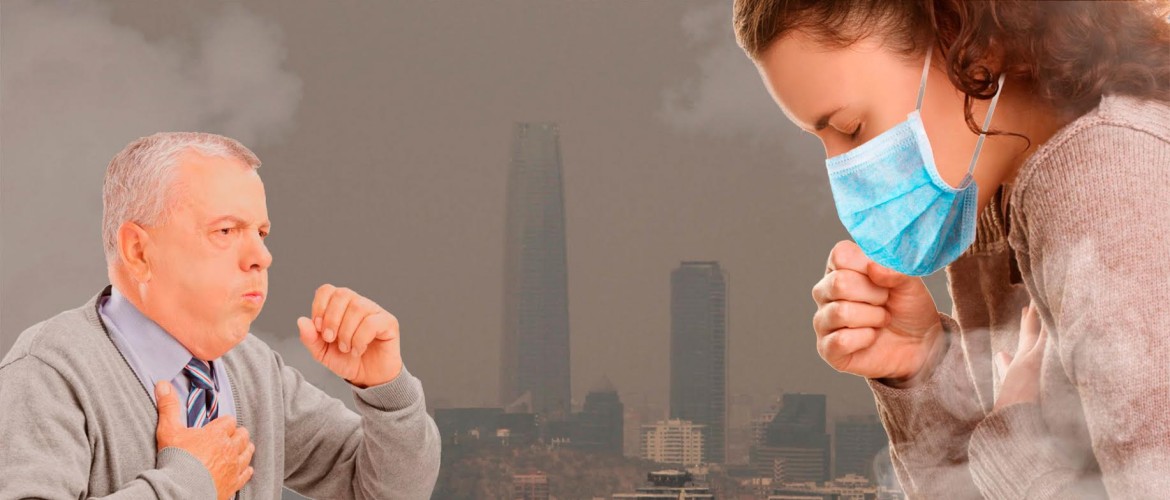Statement from the France embassy in Chile about the fire happened in Santa Marta
- January 22, 2016
- Posted by: ACCDIS

As the inhabitants of Santiago have found it, the fire that occurred in the Santa Marta garbage dump, located in the commune of San Bernardo near Route 5 at the South-West exit of the city, has plunged the city into a thick, foul-smelling cloud. When this incident occurred, The Ministry of Health of Chile estimates for the moment that the gases caused by this fire are no more toxic than those of a usual fire where organic materials and not chemical products are burned, therefore, the risks to the health of citizens are low, The following recommendations for preventive measures have been announced:
– Abstain from all sports activity
– Close doors and windows in case of smoke outside
– Use a mask or a damp cloth when you go outside
– Stay away from the area where the presence of smoke is significant, especially in the cases of vulnerable people (Pregnant women, Infants, Younger children, Seniors, people who suffer from a respiratory illness or failure, among other cardiopulmonary conditions) and heading to a less polluted area
If you have been exposed to smoke, Consult the medical service in case of:
– Conjunctivitis or a feeling of sand in the eyes
– Persistent cough
–Hoarseness
– Shortness of breath
– Wheezing breathing
–Dizziness, Vomiting, weakness
– Commitment to conscience (v. Gr. sleepiness, drowsiness)
If you have been exposed to fumes and no symptoms, We recommend that you stay in your home. On the website of the Embassy of France in Chile, A complete statement is found, translated by the doctors of this embassy.
http:www.ambafrance-cl.o
However, the consequences of this problem on the health of the inhabitants of Santiago is not the subject of consensus among experts.. The national press has reported on these various analyses
http://www.latercera.com/noticia/nacional/2016/01/680-664825-9-especialistas-se-enfrentan-por-efectos-en-la-salud-tras-incendio-en-vertedero.shtml
In addition, the Chilean authorities, who have acknowledged a delay of several days to put out the fire, however, they announce a significant reduction in smoke emissions at night.
This embassy invites you to stay informed of the evolution of the situation and to follow the recommendations as many as you can for your care..
Source: Dr. Edgardo Grob, doctor of the Embassy of France in Chile, Professor of Respiratory Medicine, Univ. Austral de Chile and member of the Environmental Pollution Commission, Chilean Society of Respiratory Diseases
_______________________________________________________________________________
On this same premise, Dr. Manuel Oyarzun, specialist in respiratory diseases and biomedical effects of air pollution, academic of our institute and coordinator of the Environmental Pollution Commission of the Chilean Society of Respiratory Diseases, he comments:
"The effects of air pollution by a certain pollutant in general terms, depends on the "Effective dose" which has essentially 3 determining factors: concentration (C), Exposure Time (Texpo) and minute ventilation: V’ (Volume of air mobilized by the respiratory system in one minute)
I mean,: Effective dose = (C) · (Texpo) · ( V’)
Therefore, we must try to shorten the exposure time by extinguishing the emission source as soon as possible. The concentration of contaminants must be measured to estimate their potential toxicity and evaluate the possibility of moving the most susceptible population away from the area and it is necessary to avoid increasing minute ventilation., for example avoiding physical exercise especially outdoors.
Knowing the composition of air pollution is also important, because it is known that gases and particles can interact potentiating the toxic effects according to the nature of the gas. In this regard, it is important to note that at this time of year the level of ozone in the air of the Metropolitan Region is usually high due to the effect of solar radiation, This increase in ozone concentration can increase the toxicity of particulate matter (PM2,5). It is also important that the people involved in extinguishing the fire have the appropriate personal protection measures, such as appropriate masks to avoid breathing dangerous levels of gases and/or particulate matter"
